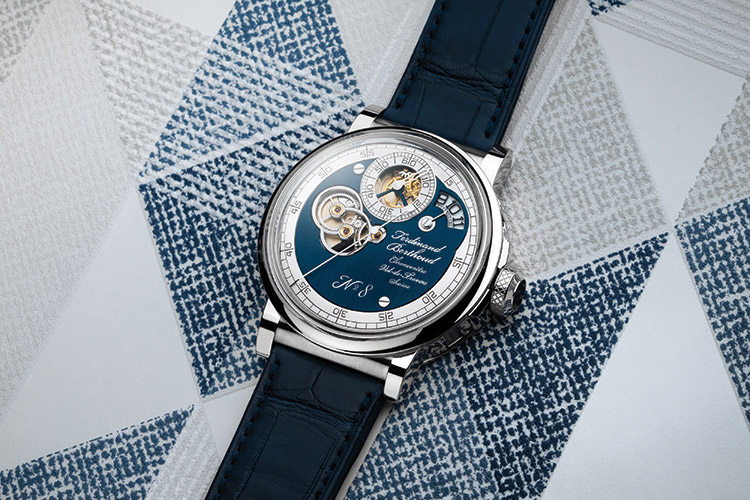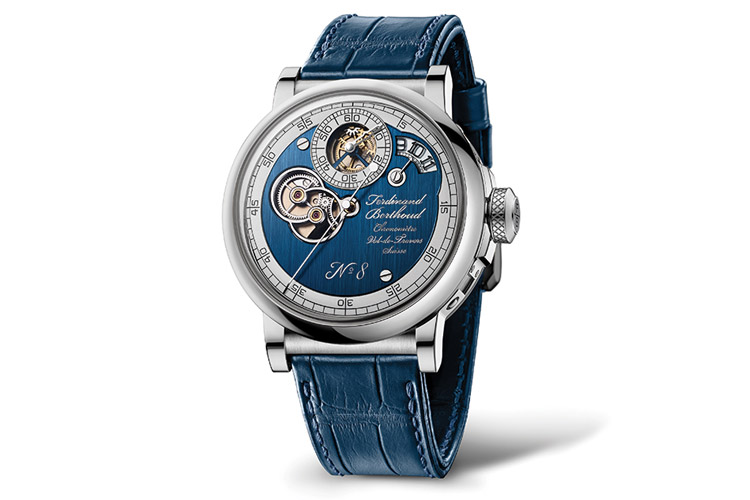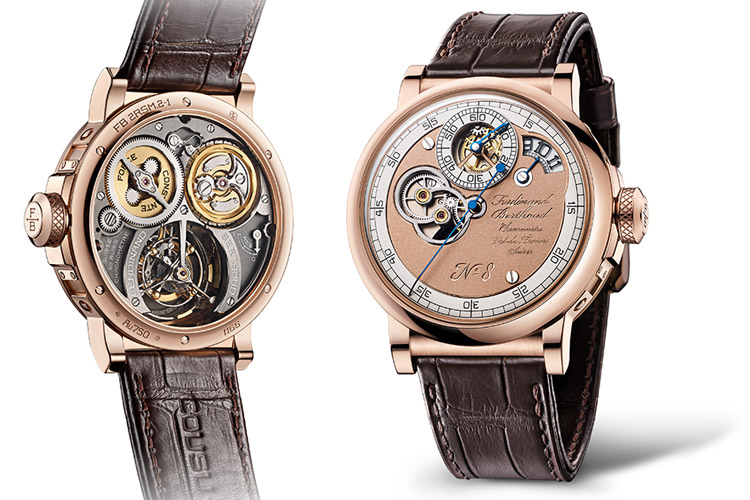
Chronomètre FB RSM is an original complication developed in the grand tradition of watchmaking apprenticeship. Ferdinand Berthoud devoted his life to experimentation and to passing on his knowledge by publishing numerous specialised works and training apprentices. The Chronomètre FB RSM continues this tradition by enabling a young watchmaker from the University of Neuchâtel to participate in the development of the movement as part of his graduation project
The FB-T.FC-RSM calibre, a tourbillon regulator with fusee-and-chain transmission, for the first time incorporates two complications: independent deadbeat seconds visible on the dial side and a stop-seconds mechanism. In terms of display and operation, the watch offers a present-day take on the regulator-type principle. The hours are read off via a rotating disc at 2 o’clock; the minutes are indicated by a facetted and skeletonised hand on the subdial at 12 o’clock; and, the seconds hand occupies a central position on the watch face. The “SM” on the calibre references the deadbeat seconds mechanism (seconde morte in French), while a balance-stop device enables the tourbillon to be stopped when setting the time.
The 18-carat gold dial is hand-engraved and bears the “No. 8” inscription like the original No. 8 Marine Clock. The deadbeat seconds mechanism is visible through a special symbolically figure-eight-shaped aperture at 9 o’clock. Only 20 movements will be produced, and several key exterior elements can be chosen by the collector. The 53-hour power reserve is visible from the back, close to the three key components of the FB-T.FC.RSM suspended movement: the fusee, the barrel and the tourbillon with direct-drive seconds. In keeping with the tradition cherished by Ferdinand Berthoud, this complication was developed with a young apprentice watchmaker who devoted his graduation project to it.








